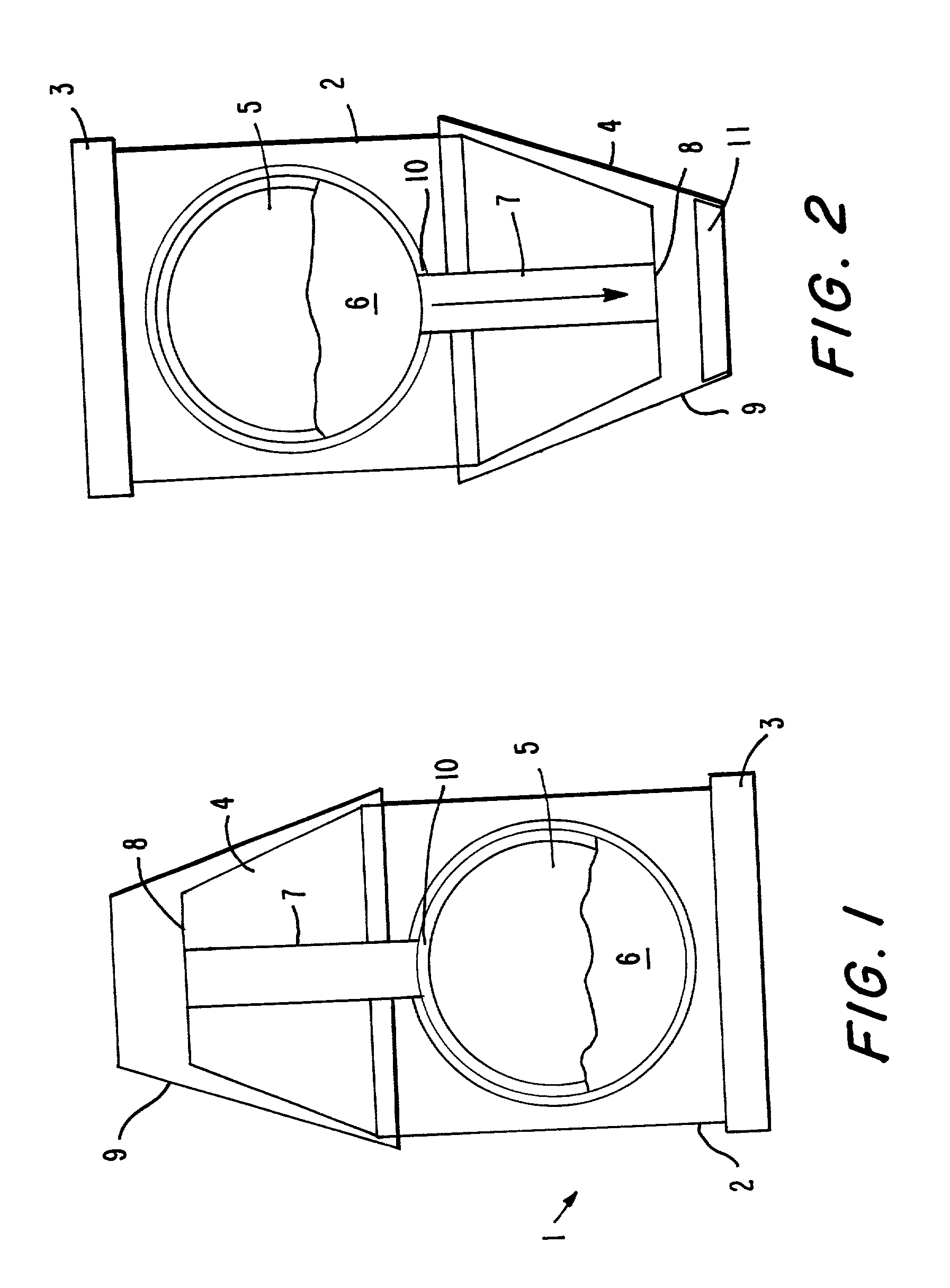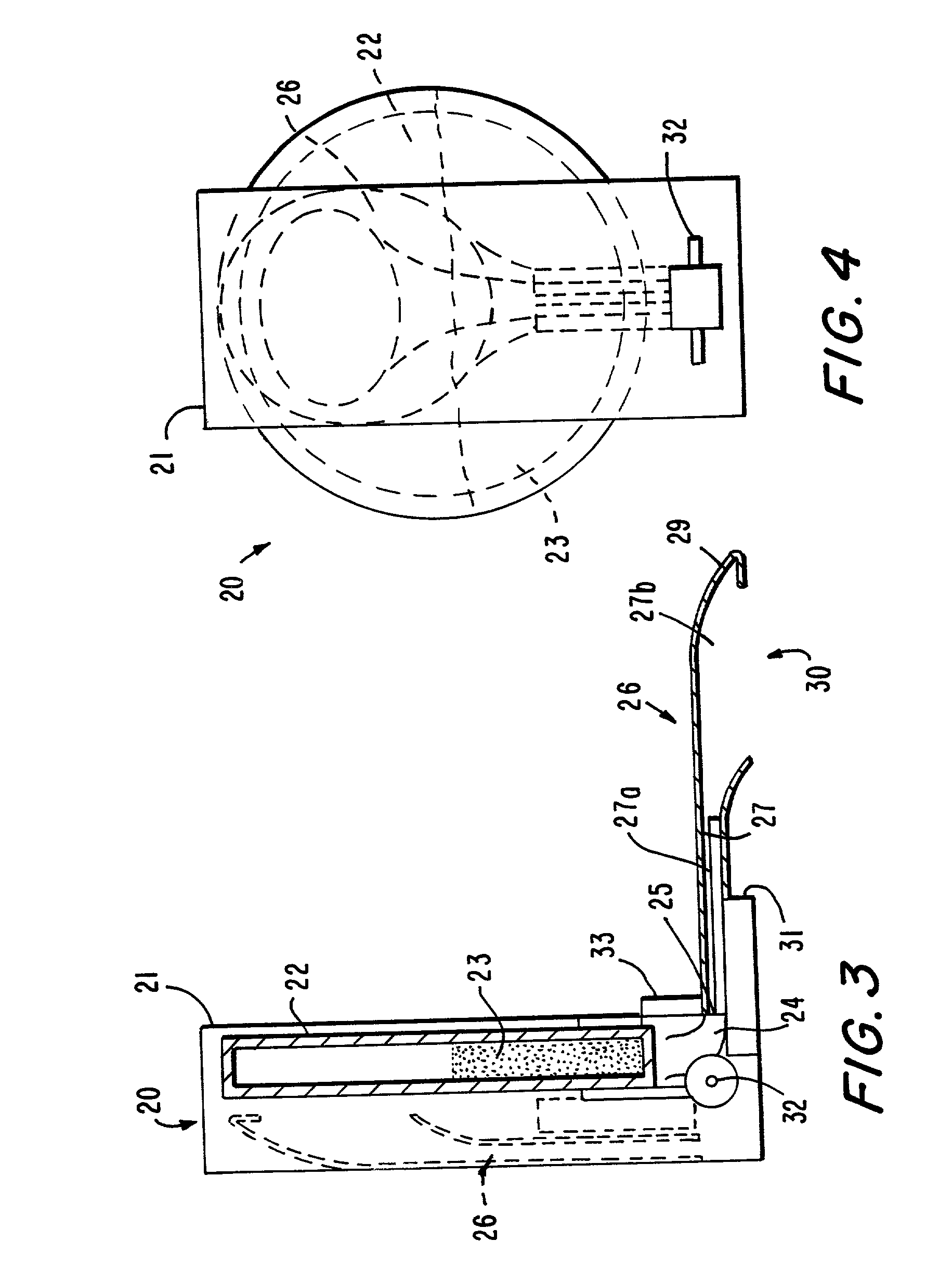Delivery of oral drugs
- Summary
- Abstract
- Description
- Claims
- Application Information
AI Technical Summary
Benefits of technology
Problems solved by technology
Method used
Image
Examples
Embodiment Construction
[0137] With reference to FIG. 1, a delivery device 1 has a housing 2, which includes a base 3 and an outlet portion 4. Within the housing is a chamber 5 of circular cross section. The chamber encloses a batch 6 of a particulate pharmaceutical preparation, for example, a powder or granular preparation, which comprises an orally active drug. At the upper extremity of chamber 5 is a delivery conduit 7 which communicates with a delivery outlet 8. A cap 9 can cover the outlet 8, and may be attachable by friction fit or snap fit means (not shown in the drawings) to the circumferential surface of the housing 2. A metering device 10 is provided at the periphery of the chamber 5 for the purpose of metering a dose of the preparation from the chamber 5 and discharging the metered dose into the delivery conduit 7. The metering device, which is not shown in FIG. 1, may for example be of a kind used for metering dry powder formulations in dry powder inhalers. One suitable form of such a metering ...
PUM
| Property | Measurement | Unit |
|---|---|---|
| Fraction | aaaaa | aaaaa |
| Fraction | aaaaa | aaaaa |
| Fraction | aaaaa | aaaaa |
Abstract
Description
Claims
Application Information
 Login to View More
Login to View More - R&D
- Intellectual Property
- Life Sciences
- Materials
- Tech Scout
- Unparalleled Data Quality
- Higher Quality Content
- 60% Fewer Hallucinations
Browse by: Latest US Patents, China's latest patents, Technical Efficacy Thesaurus, Application Domain, Technology Topic, Popular Technical Reports.
© 2025 PatSnap. All rights reserved.Legal|Privacy policy|Modern Slavery Act Transparency Statement|Sitemap|About US| Contact US: help@patsnap.com



